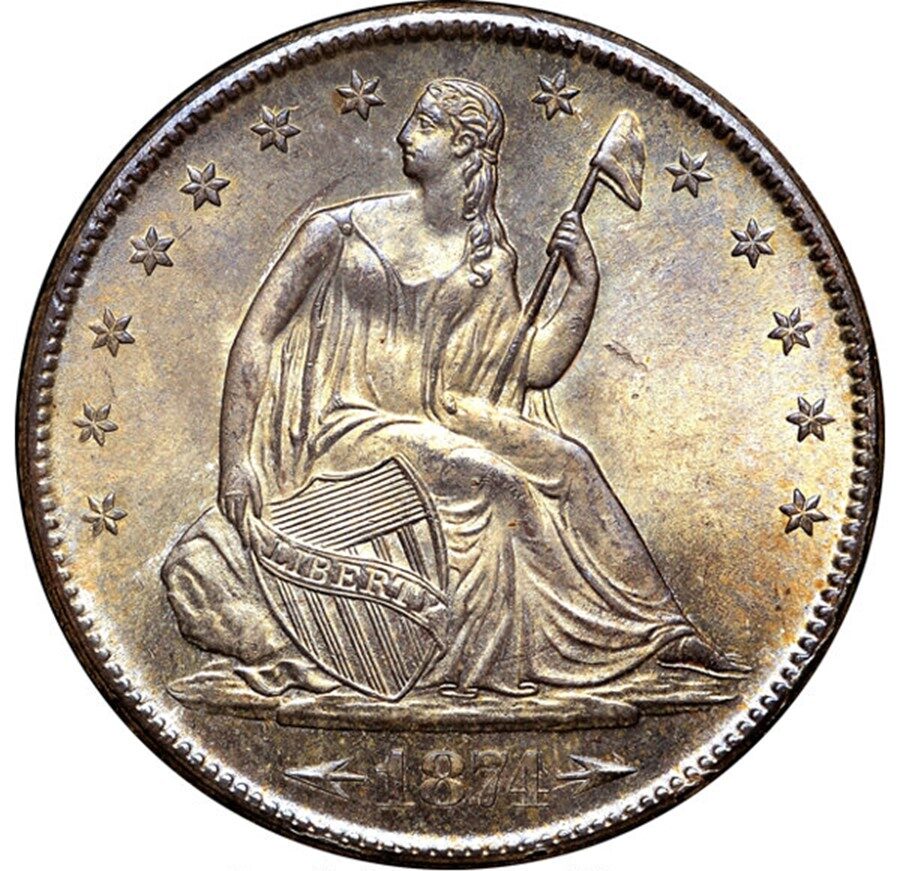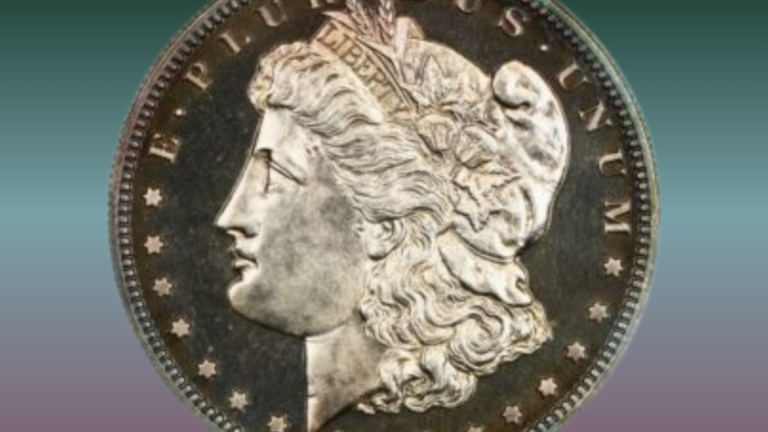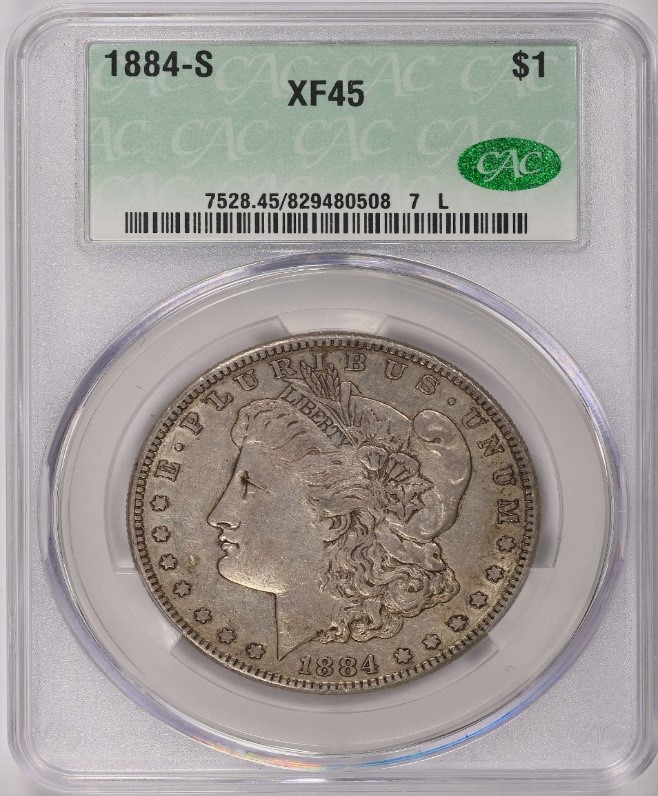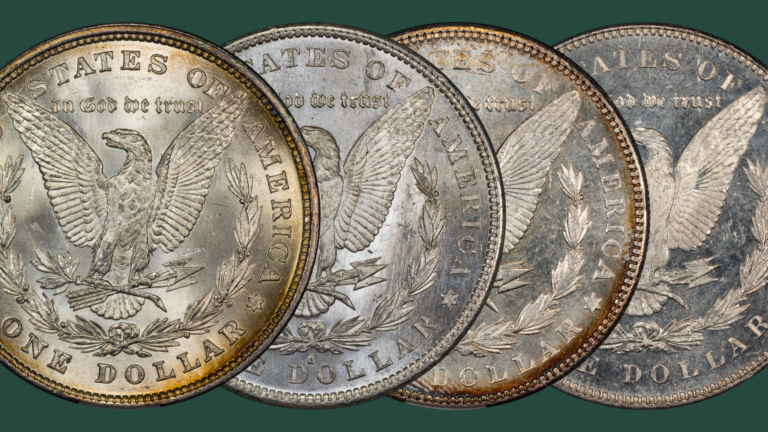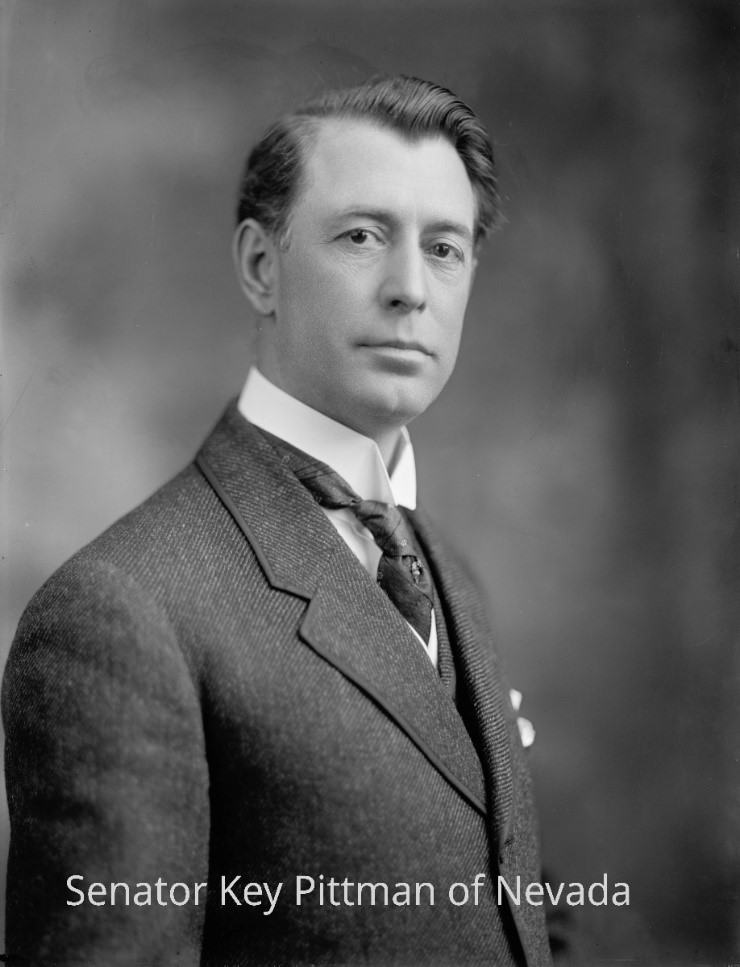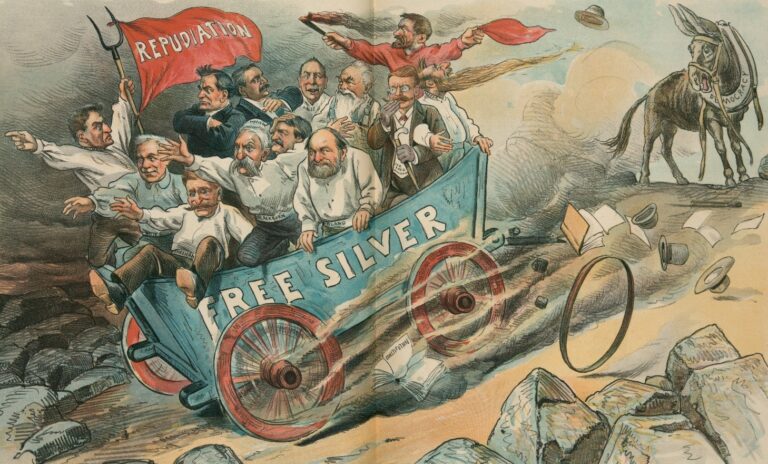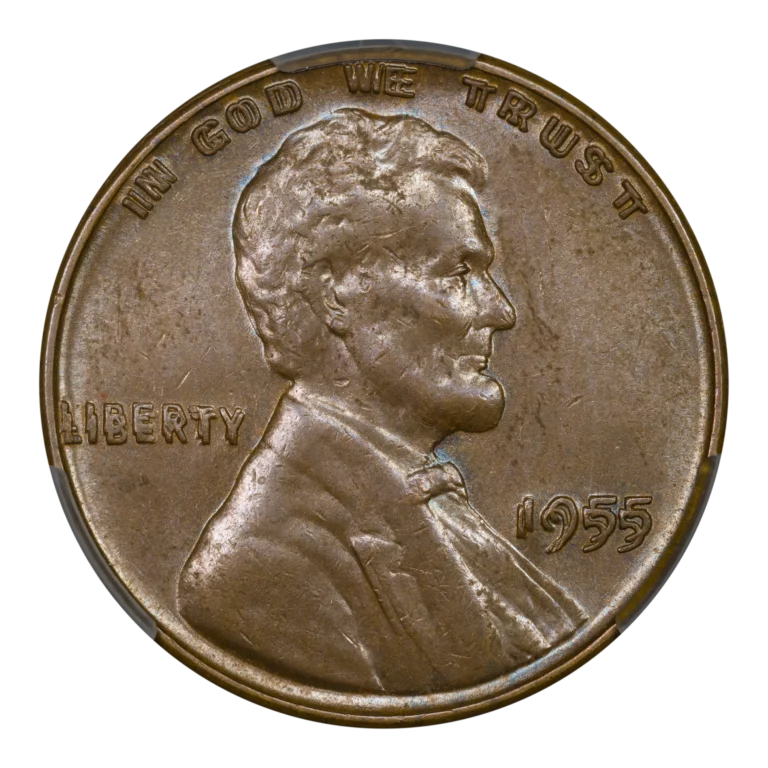by Greg Reynolds
Before focusing upon pre-‘Civil War’ types, it is best to discuss half dollars from 1865 to the middle of the 20th century. A gem type set from this period is not difficult to assemble. Indeed, great half dollars from the 1930s back to the 1860s may be acquired for relatively low prices in the context of gem quality, classic U.S. coins. A thoughtfully built type set from this period should be extremely appealing and very enjoyable to own.
Collectors of gem quality coins should not be talked into believing that there is a need to buy MS-67 or MS-68 grade coins for a type set to be fun to assemble and impressive upon completion. There are wonderful MS-65 and MS-66 grade coins to find and obtain, though they should be selected with patience and care.
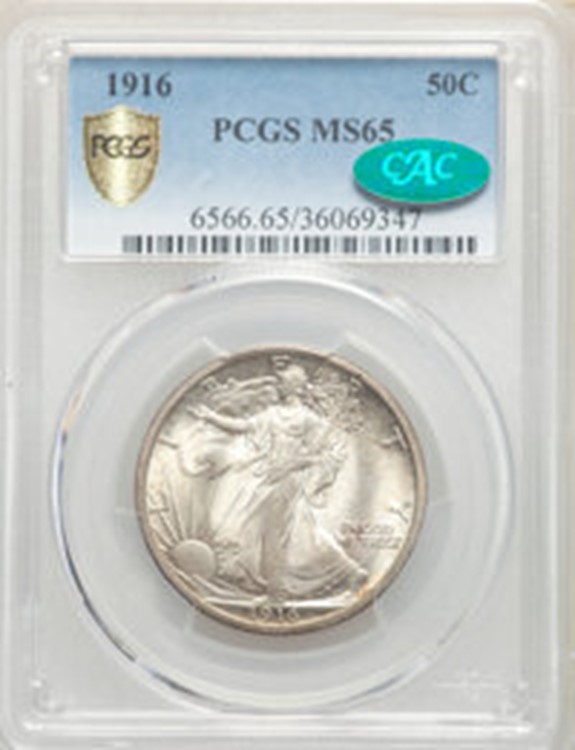
Gem Quality, Grades from 65 to 68
By tradition, coins that grade from 65 to 68 are referred to as being of gem quality. In many cases, it is efficient for collectors interested in gem quality coins, especially beginners, to seek appealing, certified MS-66 or MS-65 grade coins rather than pay the tremendous premiums for classic U.S. coins that grade or are said to grade above MS-66. Classic U.S. coins that grade MS-67 or higher should be discussed separately and should be pursued by collectors who have applicable personalities, perspectives and budgets. Most collectors of gem type coins will be happy with 65 or 66 grade coins.
Certified MS-65 and MS-66 grade 20th century type coins are very easy to find. PCGS has graded more than 130,000 Walking Liberty half dollars as MS-65, more than 48,000 as MS-66, nearly 4000 as MS-66+ and more than 6000 as MS-67. NGC has graded thousands as well. Of course, not all of these are different coins. An immediate point is that common date Walkers that are certified as grading from MS-65 to MS-67 are plentiful. With an ample budget and persistence, a collector could fill a sizable bedroom with gem Walkers, though I am not suggesting doing so.
CAC has approved 6098 Walking Liberty half dollars as grading in the MS-65 range, 7900 as MS-66, and 3306 as MS-67. As 1933/34 is the traditional dividing line between classic U.S. coins and ‘modern’ issues, I suggest acquiring a Walker that dates before 1934 for a type set. In this way, a type set of classic U.S. half dollars could be just that, a set of classic U.S. coins.
Beginning around 1934, for reasons relating to the Great Depression and the political agenda of the FDR administration, a greater number of coins were minted than were needed for commerce at the time. It was a policy then for the national government to spend money on goods, services and projects that were not really demanded in the marketplace, with the idea of stimulating the economy and keeping people working who might otherwise be or become unemployed.
During the 1920s, less than twenty-three million Walking Liberty half dollars were minted. During the 1930s, in contrast, more than eighty-three million Walkers were minted. Plus, more than three hundred and twenty million were minted from 1940 to 1947.
A significant number of uncirculated coins from the 1930s and 1940s ended up in the possession of coin dealers. For decades, cents, nickels and silver coins that were minted from 1933 to the early 1960s were widely available in rolls, and often traded in quantity among dealers and speculators. Indeed, there were many dealers and coin buyers who focused their attention on rolls of coins that were minted after 1933 or so. These were amazingly popular in the 1950s and 1960s and continued to be traded actively among players in the mainstream of the coin business until well into the 1970s. As a consequence, business strike coins minted from 1934 onward tend to be common, though there are exceptions.
Premiums Realized for Gem Quality Walking Liberty Halves
For a gem type set of half dollars, I suggest a 1929-D or a 1929-S Walker. Though somewhat common overall, the 1929-D and the 1929-S are condition rarities in gem grades. They were minted at the end of the ‘Roaring Twenties,’ a fascinating and lively period in American history.
On Nov. 12, 2020, Stack’s-Bowers auctioned a CAC approved MS-65 grade 1929-S for $3600. This 1929-S was from the collection of Larry Miller, who will be remembered for his epic set of silver dollars, including several famous, condition rarity Morgans.
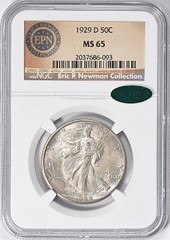
On April 25, 2021, for $1665, GreatCollections sold a CAC approved, NGC graded MS-65 1929-D half that was formerly owned by Eric Newman, who assembled one of the half dozen all-time greatest collections of U.S. coins and other American numismatic items. This coin is in an NGC holder with a special label that identifies this pedigree, “Eric P. Newman Collection,” and features the logo of Newman’s non-profit society, which funded the Newman Numismatic Portal on the Internet.
On July 18, 2021, GreatCollections sold a CAC approved MS-65 grade 1929-S Walker for $2953.12. Among the earliest Walkers, the 1916 and the 1917 are relatively inexpensive. On Jan. 24, 2021, Heritage auctioned a CAC approved MS-65 grade 1916 for $1860, which is closer to a wholesale level than to a retail level. A dealer who had this coin in inventory might very well price it above $2100.
Among early Walkers, a 1917 may be the best value for someone assembling a gem type set. On April 11, 2021, the firm of David Lawrence sold a CAC approved MS-65 grade 1917 for $925.

Type #12 – Barber Half Dollars
Although Barber halves were minted during both the 19th and the 20th centuries, I suggest acquiring a 19th century coin for a type set. The 19th century has a mystique about it.
Telephones did not come into existence until late in the 19th century and they were extremely rare until the 20th century. Before 1900, only a small percentage of American households had electricity. People tended to use candles or gas-lamps for light. Though toilets were becoming popular, most U.S. citizens still used outhouses at the end of the 19th century. While trains, powered boats and some automobiles were in use during the late 19th century, a large portion of the citizenry relied upon horses for transportation.
Technological advances were responsible for tremendous changes in the lifestyles of U.S. citizens during the first two decades of the 20th century. This transformation must have seemed miraculous to people at the time. The same type of half dollars, however, was produced from 1892 to 1915. Advances in technology were implemented at the U.S. Mint, though did not have a noticeable effect on the appearances of Barber half dollars.
Barber halves of the 19th century are historical relics from a bygone era. Obtaining a gem Barber half with a 20th century date would not be a challenge. It is not as easy and more fun to find a nice gem Barber half with a 19th century date.
In gem grades, all the other 19th century dates are much rarer than the 1892. On August 22, 2021, Heritage auctioned a CAC approved, PCGS graded MS-65+ 1892 half for $2640. A little more than a year earlier, the firm of David Lawrence sold a CAC approved, PCGS graded MS-65 1892 for $1925.
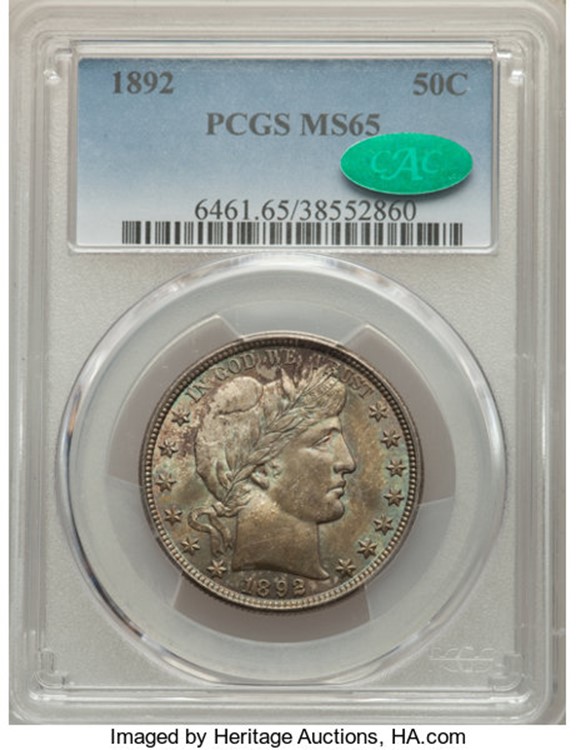
A different CAC approved, PCGS graded MS-65 1892 half was auctioned by Heritage for $1920 on April 26, 2020. This coin exhibits russet, tan, blue and green tints that are often seen on naturally toned Barber halves.
While I suggest a gem quality 1892, other MS-65 to -66 grade, 19th century Barber halves are around, though the others tend to be costlier. Collectors should figure their own collecting budgets and formulate plans. Gem Barber halves with stunning toning, however, may be hard to resist even if they cost collectors more than respective budgeted amounts.
Type #11 – Liberty Seated, With Motto, With Arrows (1873-74)
The reasons for the arrows in 1873 and 1874 are discussed in some of my other guides. A point to be emphasized here is that these are extreme condition rarities in gem grades. Despite the numbers in PCGS and NGC reports, I have seen very few 1873 or 1874 ‘With Arrows’ halves that I personally regard as gem quality.
CAC has approved zero 1873 Philadelphia Mint ‘With Arrows’ halves as MS-65 and just two as MS-66. CAC has approved two Philadelphia Mint 1874 ‘With Arrows’ halves as MS-65 and four as MS-66. The 1873-CC and 1874-‘Carson City’ Mint, ‘With Arrows’ halves are much rarer in gem grades than corresponding Philadelphia Mint issues, and would not be practical selections for type sets.
PCGS has graded two 1873-S ‘With Arrows’ halves as MS-65, and neither of those two have been CAC approved. CAC has, though, approved two 1874-S ‘With Arrows’ halves in the gem range, one as MS-65 and one as MS-66.
On Dec. 17, 2020, Stack’s-Bowers auctioned a CAC approved, NGC graded MS-65 1874 ‘With Arrows’ half for $20,400. This coin was from the famous Larry Miller Collection, which contained an 1804 bust silver dollar and a gem 1893-S Morgan.
On Sept. 19, 2021, GreatCollections sold a CAC approved, PCGS graded MS-66 1874 half for $26,401.10. Although the CPG-CAC retail value estimate may reflect this result, I contend that this result should be consistent with a Greysheet-CAC Bid (leading wholesale) value and a medium retail value estimate for a MS-66 grade 1874 half should be around $29,750 in October 2021.
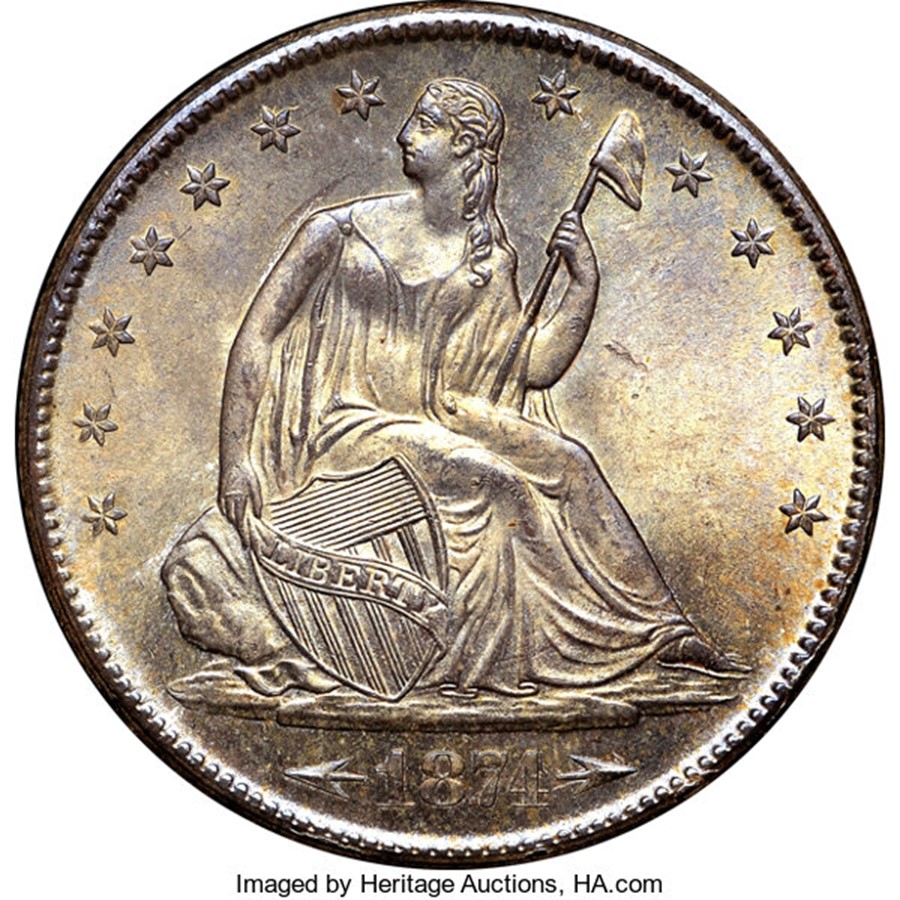
On Nov. 20, 2020, Heritage auctioned a CAC approved, NGC graded MS-65 1874-S ‘With Arrows’ half for $21,600. Heritage earlier sold this same coin on June 4, 2020, for $22,800 and on Nov. 15, 2013, for $39,656.25. It was from the legendary collection of Eric Newman. I saw it in 2013. This 1874-S half is a very appealing, gem quality coin.
As of Oct. 14, 2021, the CPG-CAC retail price estimate for a MS-65 1874 or 1873 ‘With Arrows’ half is $14,400. In my view, this estimate is very low. For a CAC approved MS-65 grade coin of this type, I believe that many dealers would, if they have one in late 2021 or early 2022, ask at least $18,500, maybe even more than $23,000!

Show off Your Collection in the CAC Registry!
Have CAC coins of your own? If so, check out the CAC Registry–the free online platform to track your coin inventory, showcase your coins by building public sets, and compete with like-minded collectors!
Type #10 – Liberty Seated, With Motto (1866-91 except 1874)
It is easy to find gems of the ‘With Motto’ type. Among the least scarce in gem grades are the 1875, 1875-S, 1877-S and 1879. A significant number are available each year.
On March 8, 2021, GreatCollections sold a CAC approved MS-65 1875-S for $2493. On June 9, 2021, Stack’s-Bowers auctioned a CAC approved MS-66 grade 1875-S half for $5040.
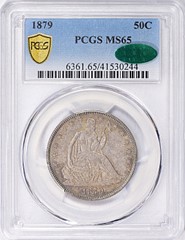
On May 30, 2021, GreatCollections sold a CAC approved MS-65 1879 for $2926.12. On August 17, Stack’s-Bowers auctioned a CAC approved MS-66 grade 1879 for $5280. On the whole, assembling a gem quality, post Civil War type set of classic U.S. half dollars is not difficult and costs only a small fraction of the amount that would be required to build a gem quality set of any of the included types ‘by date.’ Collectors learn while collecting and a type set allows for a collector to enjoy acquiring coins from multiple time periods over the history of the U.S. Artistic and striking characteristics vary in interesting ways among coins of different types of the same denomination.
Images are copyrighted by Heritage Auctions, Stack’s Bowers Galleries, and Great Collections.
Copyright © 2021 Greg Reynolds
About the Author
Greg is a professional numismatist and researcher, having written more than 775 articles published in ten different publications relating to coins, patterns, and medals. He has won awards for analyses, interpretation of rarity, historical research, and critiques. In 2002 and again in 2023, Reynolds was the sole winner of the Numismatic Literary Guild (NLG) award for “Best All-Around Portfolio”.
Greg has carefully examined thousands of truly rare and conditionally rare classic U.S. coins, including a majority of the most famous rarities. He is also an expert in British coins. He is available for private consultations.
Email: Insightful10@gmail.com
